The Karnafully-9 chugged through the moonlit night, its motor hum drowned out by an energetic fan in the cabin. The river between Dhaka and Chandpur was calm, the ride was smooth. We were headed to Bhola in the delta of the mighty Meghna, a distributary of the Brahmaputra.
I drifted between sleep and memories, nights and days, settling on one particular night, a week prior.
The Empty Trawler

Mail Order Valium “Our boat will not last two days in these waves,” Alom the boatmaster said to us that night. The boat swayed back and forth like a rocking chair as it fought its way against the tide, through the black of the night, towards the un-hemmed emptiness of the Bay of Bengal.
The GolPatta was clearly not built for the sea. But a beautiful hilsa trawler glowing yellow in a dim light, anchored far ahead of us, certainly was.
https://www.zahrfreighters.com/ware/hezynovu/ Its deck arched gracefully towards the water and then soared heavenward to end in a white prow. Butterscotch buoys lay piled up on the deck like balloons. Men were darkly silhouetted against soft, thick, white, diaphanous fishing nets.
As we pulled up alongside, the silhouettes grew faces which filled out in smiles of welcome. A cabin amidships, a net-and-rope-strewn poop, a little room in the back and more figures in the dark all came into view on the Mayer Doa ( ‘mother’s blessings’ in Bengali).
Purchase Alprazolam The trawler’s cook opened a door aft of the boat, carved with a kolohi or kalash, and fired up his stove to make laal saa – a red, milk-less tea, a necessary companion for any conversation. We asked after the owner. A young man in his mid-thirties came forward from the shadows and introduced himself.
Sultan and his crew of fourteen had been on the high seas for two days, and had only ten kilograms of hilsa to show for it. That amounted to less than one fish per crew. The boat, in its maiden season on the seas, had cost over 13 lakh Taka and the fishing nets another 10 lakh Taka.
Buy Zopiclone Tablets “When we were young, we’d go out for an hour and come back with enough fish for a day. But now we go for eight hours, we fish deeper, fish farther out, and still come up with less than half the fish compared to my younger days.”
https://healthybalancebowentherapy.com/work/xadihoge/ The hilsa fishing window is three months, twice a year and the life of a boat like this is only eight years. Deep in debt, Sultan cannot afford such silent seasons. Hilsa is their most lucrative catch. Hilsa makes their lives.
Buy Tramadol Next Day Delivery Alom offered the crew our own story from earlier that day. We’d met fishermen who had stretched their nets across the width of the Sela river for over six hours and only managed to catch one single hilsa. They nodded – yes, they too had heard that the rivers were empty this year.
Buy Diazepam 10Mg Tablets “When we were young, we’d go out for an hour and come back with enough fish for a day,” said Noor Miyan, a 60 year-old fisherman who had been passing around biscuits to go with the saa. He insisted I have one, two, then three biscuits. “But now we go for eight hours, we fish deeper, fish farther out, and still come up with less than half the fish compared to my younger days.”
https://rqes.ca/base/mijuvidif/ A few days later, we would meet a trawler that had returned from the Swatch of No-Ground: a deep-sea canyon rich in life, almost 50km off the southernmost tip of the Sundarbans. And even there, so far out, the hilsa was declining and they had come back with a fraction of what they had expected to net in high season.
https://clinicadefertilidadjerez.com/steps/zobaxot/ Caesar, a young herpetologist and my companion on this trip, had told me of large commercial trawlers dropping nets deeper than ever into that canyon. They scooped up anything unfortunate enough to encounter its scrape, including writhing, crawling, puffing creatures that no one eats and no one has any use for. They all die in vain: bycatch toss-buried at sea.
Buy Diazepam Online No Prescription These commercial trawlers make money, for they fish even in the banned seasons. Twice a year, just after the monsoon’s prime fishing season, gravid hilsa go upstream to breed. This is when Bangladesh imposes a strict ban on traditional fishermen. They are not allowed at sea and into estuaries, not allowed to fish hilsa or the juveniles called jatkas.
Buy Diazepam Online Without A Prescription Commercial boats however, paying their way past police and coast guards, continue to fish. Their nets pull up juvenile populations and prized egg-carrying hilsa, which are exported for much gain.
Buy Xanax Xr Online As we spoke, a wild wind had started up and the Mayer Doa, bobbing furiously, looked fragile and pretty with its nets and balloons. The fishermen, one by one, went over to a plank set amidships to make paan (betel leaf). Noor Miyan made one for me. A young fisherman crawled into the cabin amidships and lit up a cigarette. Others went back to mending nets.
Ambien No Prescription The seeming normalcy of routine masked the likely tensions inherent in traditional fishing. The boat, the nets, the fuel, their food – it all cost money. Back home, a Mohojon (moneylender) waits for the lakhs of Taka the fishermen have borrowed. And families, like Noor Miyan’s children and grand children, look forward to new clothes for the Durga Puja festival coming up.
Buy Diazepam Online Without Prescription They needed to catch fish in fishing season. But slowly, surely, year on year, the sea was getting less generous.
],[https://www.peepli.org/wp-content/uploads/2015/03/onehilsa_2-1000x750.jpg,(medium)],[https://www.peepli.org/wp-content/uploads/2015/03/onehilsa_2.jpg,(large)])
Hilsa, The King Of Fish
Hilsa (Tenualosa ilish) is an anadromous shad: it lives its life between the sweet and the brine.
Ambien Without A Script For most of its life it lives in the sea and near the mouth of a river, in the lower reaches of an estuary. When the southwest monsoon breaks and the rivers swell, it begins to move upstream. The female is gravid, heavy with eggs, and she loves swimming against the thick, silted flows and vicious currents to reach her spawning grounds.
In due time, shoals of hilsa will swim back to the sea with the young ones, called jatkas.
In India, hilsa from the Bay of Bengal were once known to migrate up the Ganges all the way till the Yamuna to Agra and even Delhi. Buxar, near Allahabad was famous for hilsa catches. Not any more, for the Farakka barrage denies fish their upstream passage.
Buy Zolpidem Sleeping Tablets Dams and weirs, concrete barrages, and impediments of every kind that come up on a river have been identified as the biggest threat to hilsa and any such diadromous (migrating up and down between river and sea) creatures all across South Asia.
Purchase Xanax Without Prescription Hilsa have disappeared from the Cauvery, hilsa fisheries have all but collapsed in the Narmada, and they’ve dwindled to dangerous lows in the Godavari delta. In Pakistan, hilsa find their spawning ground on the Indus severely threatened by multiple barrages. In each case, the millions of fishermen tied to the hilsa have suffered deeply.
Buy Valium Overnight Delivery In Bangladesh, hilsa contributes to 1.5% of the country’s GDP. About 2-3 million fishermen and associated professions depend upon this fish alone.
Overnight Xanax Poddha nodir ilish, or hilsa from the river Padma, makes any Bengali worth her salt swoon and salivate. Connoisseurs claim that they can tell the difference between hilsa caught in the sea and hilsa from the Padma: the latter is, they say, far superior and more tasteful.
In India too, restaurants have standing orders for imports of Poddha nodir ilish. 50 kilograms of ilishare consumed in about ten days by Bengalis in one restaurant — the Bhojohori Manna, in one city, Bangalore.
Imagine thousands of icy sarcophagi of hilsa reaching Kolkata by truck and train from Bangladesh and then flying all over India to sate the palate of the craving Bengali.
Order Xanax 2Mg Hilsa is an important fish.
A wedding spread that serves ilish on the menu is held in high esteem, and spoken about long after the conch has fallen silent. Prepared for pujas, this fish is an integral part of special occasions.
https://lewisandweldon.com/award/soquhom/ Hilsa is also an ‘auspicious’ fish.
But in seasons like this, when the catches are sparse, Bangladesh typically protects its stock and its market, and calls a ban on exports. Restaurateurs in India, anticipating losses in the tens of lakh rupees, raise the price of the silver beauties in their deep freezes. The hilsa-hungry Bengali, they have found, will pay handsomely for even 100 gms of Poddha nodir ilish.
https://rqes.ca/base/kehogoh/ Hilsa is a lucrative and tasty fish.
Hilsa, flashy and curvy, decked in silver scales, is as stunning to behold as it is delicious to taste. It is bony and hard to eat, yet each de-boned morsel is a high return on time invested. This is South Asia’s own salmon; beautiful, beloved, prized, anadromous, and threatened.
There is one key difference, though. Unlike the salmon that is easily and abundantly farmed, despite numerous efforts, no one has succeeded in farming the hilsa. It refuses to be tamed.

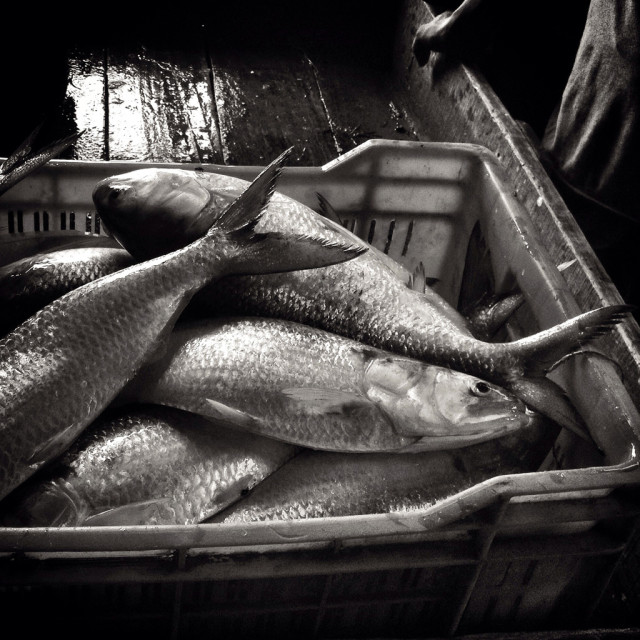
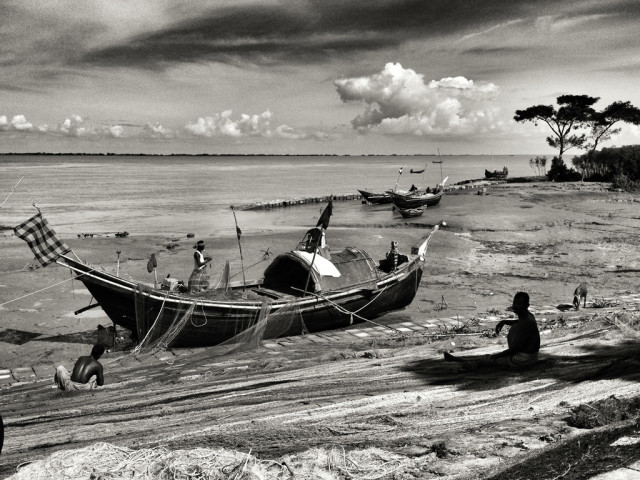
The Silent Delta
The Karnafully-9 honked, presumably to warn early morning fishermen out of its way. The blue shroud of daybreak had lightly wrapped everything around us, and a nacreous light was poking through, touching a dugout here, a chimney there, and eventually kindling impossibly green shores of paddy fields.
We pulled into a small inlet in the delta, and docked at Bhola.
The confluence of the Padma and the Meghna is one of the primary nurseries for hilsa and a prime landing site. Found here are some of the biggest, and the fish here among the tastiest. The best of this best gets exported.
Just before alighting, I stuffed the previous day’s newspaper into my bag. It announced loudly, in Bengali, that hilsa was suddenly abundant in these areas; that the catches were good, finally. That the season was looking up, finally.
We headed to Daulatkhan, the landing dock.
“We’d have had no time for you if you had come last year.”
It was near empty. Two lonely rows of massive wooden upside-down pyramid-crates sat yawning in boredom. In a good year, they’d be shivering with fresh-caught hilsa fish. In a good year, fishermen would be scurrying up from the ferries, and upending scores of baskets of flashing scales into these hungry crates. In a good year, the continuous barking of fish-auctioneers would only be drowned out by the still louder calls of their fellows.
In a good year, buyers would crowd and nod and pass and nod again at these barks, waiting eagerly with their bags for the silver loot. In a good year in Daulatkhan, lakhs of Takas would be made in a day.
“We’d have had no time for you if you had come last year.”
Today, they milled around us. Why were we there? Where had we come from? Who were we? Some were on edge. Others curious. One man muscled in. Tall above average, small goatee: “What’s your problem?” he barked.
Caesar, my traveling companion on this leg of the trip, quietly answered all the questions and with each response came a smile of acceptance. Even the belligerent man backed down immediately when Caesar offered a “Hope we are not disturbing you.”
That seemed to do the trick. The next moment, we were treated like buddies, plied with orange soda and cookies, guests of the Mohojon: the main moneylender and principal auctioneer of fish at Daulatkhan. Some started taking photos of us with their phones. One man asked me about Mumbai. They were all eager to chat, having nothing better to do.
All of these men were in debt. The Mohojon would lose 10 Lakh Takas. He threw his hands upwards; there was nothing he could do. This year there were no fish to sell. There was no money to be made. Last year had been better but, according to him, year on year the decline was evident. This year though was different. In 25 years of being in the business, he had never seen it so bad.
All over this little island, full of paddy fields and fish ponds and arecanut plantations and hilsa landing docks, no one had seen any fish. Until we reached Elisha Ferry ghat.
Here, like the newspaper said, they were having the best day of the season. That is to say, compared with the empty nets elsewhere.
“On any day last year, we would make at least 25,000 Takas,” said one Mohojon there. “Today, the best day of this season, we have made no more than 7000 Takas. This year I will make a loss of at least four lakh Takas.”
It was low tide. The meager catch was being plied to boats docked further out in the river. Workers on daily wage trotted about with baskets of fish and ice. The fishermen on the boat iced the catch and crated them for transfer to a ferry that would reach Sadarghat in Dhaka the next morning.
As they ran up the cliff to refill their baskets and scurried back down to the boats, the sun went down on this, the best day of the season. A season in which both the river and the sea had gone dark. No silver, no flash, no barks of auctioneers, no yells of buyers.



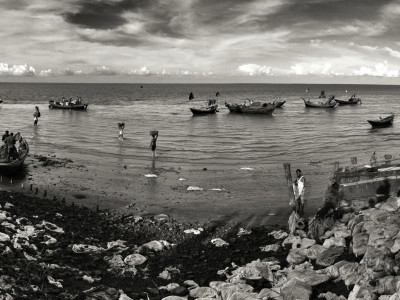

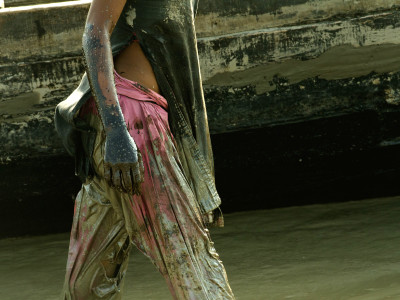
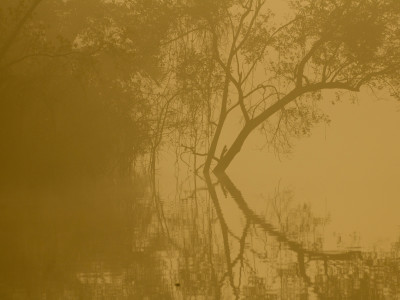
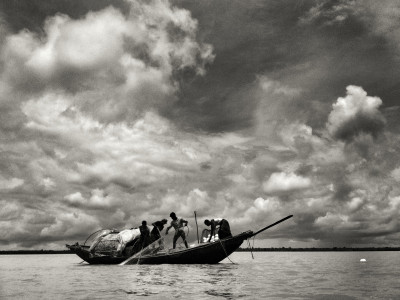
Nice story.